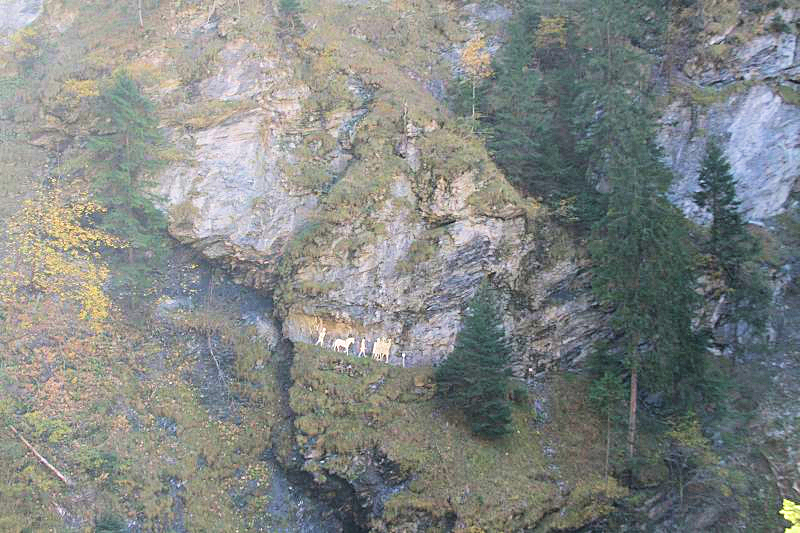|
Buildings and path in the gorge The cave sanctuary |
Zillis is perhaps to be identified with a place called Lapidaria ("Stone Quarries") on the Tabula Peutingeriana. Andeer and Marmorera, with serpentinite quarries, have also been suggested however. A few remains from the second and third century, including a hypocaust, were found near the church of St. Martin. They might be part of a mutatio, a place for changing horses. The building is below remains of a church with a baptisterium, built around 500 AD. Roman remains were also found below the ruins of the Mediaeval castle Hasenstein, some 350 meters to the south of the church. A bit to the west of the castle a cave sanctuary was discovered, which is discussed on a separate page.
The church of St. Martin. Photo: Wikimedia, Adrian Michael.In the Viamala Gorge, to the north of Zillis, a path that was hacked out in the rock face has been assigned to the Roman period. It was not wide enough for carts (0.90 m.), and could only be used by people on foot, horsemen or pack animals. A railing was fastened in five holes in the rock face, 1.30 m. apart and 1.70 above the walking level (w. 0.12, h. 0.08, d. 0.12). Today a display of soldiers and a horse has been placed on the path. Visiting this path is strongly discouraged by the Swiss.

The path with the modern display. Photos: Stefan Plogmann.
The path in the gorge. Planta 1986-1990 IV, Abb. 43 and Skizze 3.
1: Roman walking level; 2: widening for load and legs; 3: railing; 4: horseman with measuring stick.
Buildings and path in the gorge
The cave sanctuary
Literature
Jahrbuch der Schweizerischen Gesellschaft für Urgeschichte 30 (1938), 117-118; Overbeck-Pauli 1982, 159-160; Rageth 1986, 78-79; Planta 1986-1990 IV, 155-221; Drack-Fellmann 1988, 568-569; Drack-Fellmann 1991, 295-296; Rageth 1994; Liver-Rageth 2001; Ebnöther-Flückiger-Peter 2021.
[5-Dec-2023]